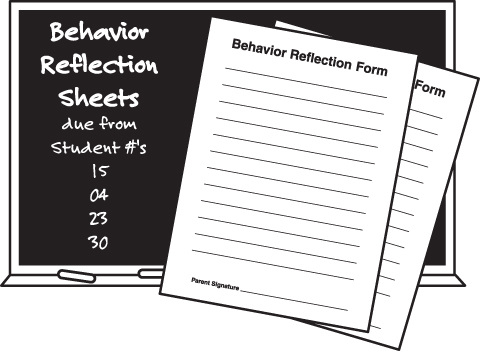If a student forgets his or her homework, a teacher may have the student stay in at recess or during study hall, do the missing work, and fill out a behavior reflection form. This form is designed to have students think about what they did, why it was inappropriate, and how to avoid this behavior next time. They need to answer in complete sentences and thoughtfully. This form is then taken home that evening, signed by the student’s parents, and brought back to school the next day. It is a great way to keep parents informed of late work and a great way to keep the student on track of his or her responsibilities.
This form is only effective for those students who forget occasionally. For the repeat offender, other measures will have to be taken to better help him or her remember. Also, the reflection form is general enough that it can also be used for other situations, such as a social problem that occurred that day in school. Filling out a sample reflection form together, as a whole class, would be a good way to model what is expected of the students.
If the teacher does not have a study hall, consider getting some teachers in the same grade level to give up one lunch period to sit for study hall. Study hall duty would be on a rotating basis. The more teachers involved, the fewer lunches missed per teacher. If this is not possible, the student should stay in from recess to fill out the reflection form and do the missing work.
Tip: The teacher may want to have a spot on a bulletin board or whiteboard for those students who are to go to study hall that day. This will also serve as a reminder to the teacher and the students that they have a reflection form that needs to be signed. It is recommended that student numbers rather than names are used on this board to avoid embarrassment.


